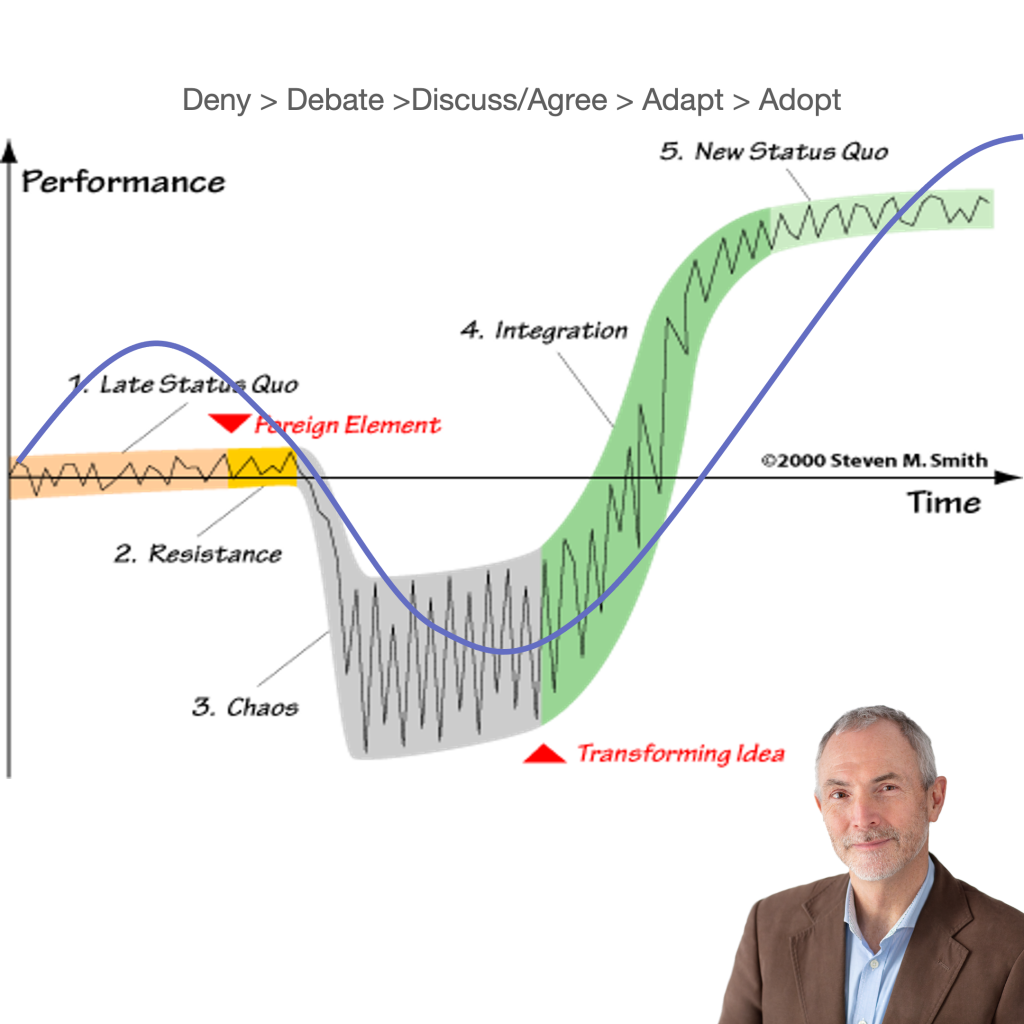
Understanding the transition curve is crucial in managing how individuals adapt to change, whether in personal life or within an organization. The concept is often illustrated in models such as those proposed by Virginia Satir and Adams, Hayes, and Hopson. Here’s a breakdown of these models and how they can help identify where you or your colleagues might be in terms of accepting change:
1. Virginia Satir’s Change Model
Virginia Satir, a renowned family therapist, introduced a change model that is widely applicable in organizational change management. Her model describes the stages of emotion and behavior that individuals typically experience when faced with change:
– Late Status Quo: The initial state before the change occurs, where everything seems normal and predictable.
– Resistance: Once change is introduced, individuals may experience resistance due to fear of the unknown and a desire to maintain comfort with the familiar.
– Chaos: As the old ways are challenged, confusion and chaos dominate, with productivity and morale potentially dipping.
– Integration: New ideas and processes begin to make sense, and individuals start integrating these changes into their daily routines.
– New Status Quo: Finally, the change is accepted, new habits are formed, and a new sense of stability emerges.
Identifying where someone is in this model can be done by observing their emotional response and openness to new procedures or changes in the workplace.
2. Adams, Hayes, and Hopson’s Transition Model
Adams, Hayes, and Hopson expanded on the work of Elisabeth Kübler-Ross’s grief cycle to apply it to managing change in organizations. Their model identifies key phases people go through as they experience change:
– Denial: Initially, individuals may deny the change is necessary or happening, maintaining a business-as-usual attitude.
– Anger: Frustration and blame may emerge as the reality of change sets in and disrupts comfort zones.
– Bargaining: Individuals might attempt to negotiate ways to avoid or minimize the change.
– Depression: A low point where the full impact of the change leads to feelings of loss and uncertainty.
– Acceptance: Gradual acceptance of the change occurs, and individuals start exploring what the new circumstances mean.
– Renewed Commitment: The final stage where individuals embrace the changes, adjusting their behaviors and mindsets to move forward.
Applying the Models
To determine where you or your colleagues are in these models, look for emotional cues, changes in productivity, verbal expressions of feelings about the change, and overall engagement levels. For example:
– Resistance or Anger might be evident if colleagues frequently express negative opinions about the change or its necessity.
– Depression or Low Points could be observed if colleagues seem particularly unmotivated or express feelings of helplessness.
– Acceptance and Renewed Commitment can be seen when colleagues start to engage constructively with the change, discussing ways to adapt or benefit from it.
These models help managers and team members alike to support one another through transitions, offering the right kind of support and interventions based on the stage each individual is experiencing.
